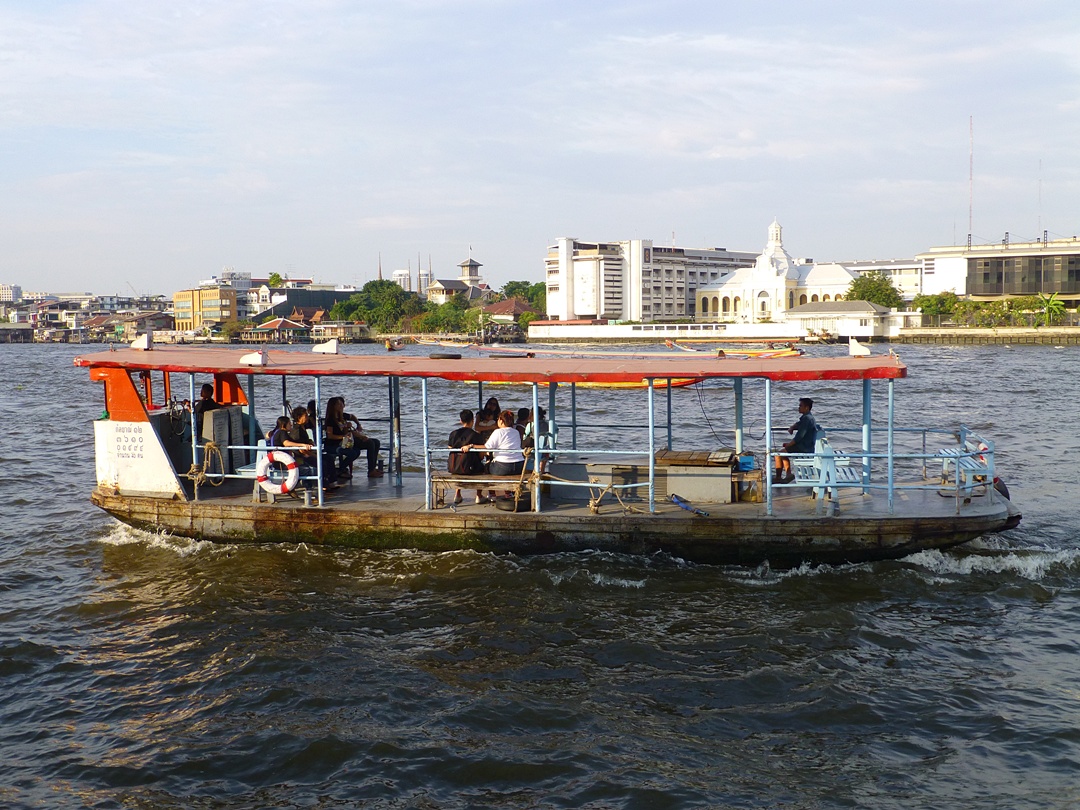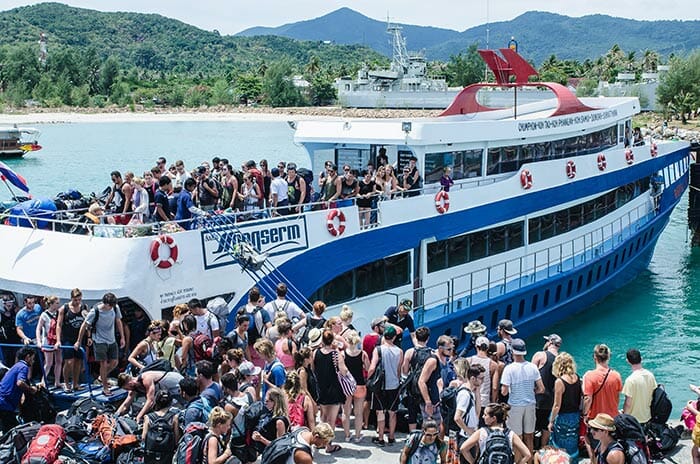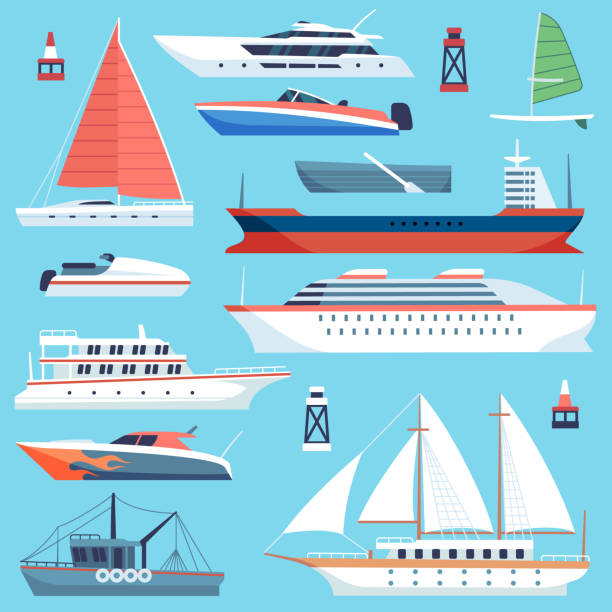เรือ ข้าม ฟาก ภาษา อังกฤษ: การเรียนรู้ภาษาอังกฤษผ่านการเดินทาง
NỘI DUNG TÓM TẮT
- 1 Ferry คนแจวเรือข้ามฟาก อ่านภาษาอังกฤษเรื่องตลก☺️ป้าโอ้ท
- 2 เรือ ข้าม ฟาก ภาษา อังกฤษ: Exploring the World of Ferry Crossings
- 3 คำศัพท์เรือข้ามฟากในพจนานุกรม
- 4 ค้นหาคำศัพท์เรือข้ามฟากในพจนานุกรม
- 5 ความหมายและใช้งานของคำว่า เรือข้ามฟาก ในภาษาอังกฤษ
- 6 ความหมายและใช้งานของคำว่า เรือข้ามฟาก ในภาษาอังกฤษ
- 7 บทเรียนภาษาอังกฤษ: วิธีใช้คำศัพท์ เรือข้ามฟาก
- 8 บทเรียนภาษาอังกฤษ: วิธีใช้คำศัพท์ เรือข้ามฟาก
- 9 การอ่านและเขียนภาษาอังกฤษที่เกี่ยวข้องกับเรือข้ามฟาก
- 10 การอ่านและเขียนภาษาอังกฤษที่เกี่ยวข้องกับเรือข้ามฟาก
- 11 คำศัพท์ที่เกี่ยวข้องกับเรือข้ามฟากในชีวิตประจำวัน
- 12 คำศัพท์ที่เกี่ยวข้องกับเรือข้ามฟากในชีวิตประจำวัน
- 13 คำแนะนำสำหรับการใช้เรือข้ามฟากในการเดินทาง
- 14 คำแนะนำสำหรับการใช้เรือข้ามฟากในการเดินทาง
- 15 วิธีการให้คำแนะนำเกี่ยวกับการเรียนรู้ภาษาอังกฤษที่เกี่ยวข้องกับเรือข้ามฟาก
- 16 วิธีการให้คำแนะนำเกี่ยวกับการเรียนรู้ภาษาอังกฤษที่เกี่ยวข้องกับเรือข้ามฟาก
- 17 เรื่องน่ารู้เกี่ยวกับประวัติและพัฒนาการของเรือข้ามฟาก
- 18 เรื่องน่ารู้เกี่ยวกับประวัติและพัฒนาการของเรือข้ามฟาก
- 19 ทริคและเคล็ดลับสำหรับการศึกษาเพื่อเรียนรู้เร็วขึ้นในเนื้อหาเรือข้ามฟาก
- 20 ทริคและเคล็ดลับสำหรับการศึกษาเพื่อเรียนรู้เร็วขึ้นในเนื้อหาเรือข้ามฟาก
- 21 FAQs – คำถามที่พบบ่อย
- 22 FAQs – คำถามที่พบบ่อย
- 23 เรือโดยสาร ภาษาอังกฤษ
- 24 เรือโดยสาร ภาษาอังกฤษ: A Comprehensive Guide to English Ferries
- 25 Introduction
- 26 Functions of English Ferries
- 27 Key Concepts
- 28 English Terminology Related to Ferries
- 29 FAQ Section
- 30 Conclusion
- 31 ท่าเรือ ภาษาอังกฤษ
- 32 ขึ้นเรือ ภาษาอังกฤษ
Ferry คนแจวเรือข้ามฟาก อ่านภาษาอังกฤษเรื่องตลก☺️ป้าโอ้ท
Keywords searched by users: เรือ ข้าม ฟาก ภาษา อังกฤษ เรือโดยสาร ภาษาอังกฤษ, ท่าเรือ ภาษาอังกฤษ, ขึ้นเรือ ภาษาอังกฤษ, ferry แปลว่า, นั่งเรือ ภาษาอังกฤษ, Ferry boat, Harbour
เรือ ข้าม ฟาก ภาษา อังกฤษ: Exploring the World of Ferry Crossings
In the realm of transportation, ferry crossings play a vital role in connecting people and places separated by bodies of water. In Thai, these maritime vessels are referred to as “เรือข้ามฟาก” (pronounced “reua kham fak”). In this comprehensive guide, we will delve into the meaning and usage of the term in English, explore related vocabulary, provide language learning tips, and uncover interesting facts about the history and development of ferry crossings.
คำศัพท์เรือข้ามฟากในพจนานุกรม
ค้นหาคำศัพท์เรือข้ามฟากในพจนานุกรม
Before we embark on our exploration, let’s start by understanding the terminology. The term “เรือข้ามฟาก” can be broken down into two parts: “เรือ” (reua), which means boat or vessel, and “ข้ามฟาก” (kham fak), where “ข้าม” (kham) means to cross, and “ฟาก” (fak) refers to a pier or a dock. So, when combined, it translates to a boat designed for crossing piers or docks.
In English, the equivalent term is “Ferry.” Let’s delve deeper into the meaning and usage of this term in the English language.
ความหมายและใช้งานของคำว่า เรือข้ามฟาก ในภาษาอังกฤษ
ความหมายและใช้งานของคำว่า เรือข้ามฟาก ในภาษาอังกฤษ
Ferry in English:
In English, a “ferry” refers to a boat or ship used to transport people, vehicles, and goods across bodies of water, such as rivers or seas. Ferries are an essential part of transportation networks, providing a convenient and efficient means of crossing waterways.
Ferries come in various sizes and types, ranging from small boats that carry pedestrians to large vessels capable of transporting vehicles and cargo. They operate on established routes, connecting terminals or harbors on opposite sides of a water body.
บทเรียนภาษาอังกฤษ: วิธีใช้คำศัพท์ เรือข้ามฟาก
บทเรียนภาษาอังกฤษ: วิธีใช้คำศัพท์ เรือข้ามฟาก
Learning English vocabulary related to ferry crossings is an exciting journey. Here are some key phrases and expressions to help you navigate this linguistic terrain:
-
Ferry Boat:
- Definition: A boat designed for the transportation of passengers and goods across bodies of water.
- Example: “We took a ferry boat to the nearby island for a weekend getaway.”
-
Harbour:
- Definition: A place on the coast where ships can seek shelter, load, and unload cargo, and embark or disembark passengers.
- Example: “The ferry departed from the bustling harbour, carrying both locals and tourists.”
-
Boarding the Ferry:
- Definition: The process of getting onto the ferry before it departs.
- Example: “Make sure to arrive early for smooth boarding of the ferry.”
-
Ferry Terminal:
- Definition: A facility where ferries arrive and depart, often equipped with ticketing and waiting areas.
- Example: “The ferry terminal offers stunning views of the waterfront.”
การอ่านและเขียนภาษาอังกฤษที่เกี่ยวข้องกับเรือข้ามฟาก
การอ่านและเขียนภาษาอังกฤษที่เกี่ยวข้องกับเรือข้ามฟาก
To enhance your English language skills in the context of ferry crossings, engaging in reading and writing activities is beneficial.
Reading Practice:
Explore English articles, blogs, or books that discuss ferry travel. Look for materials that describe experiences, destinations, and the importance of ferries in different regions.
Writing Practice:
Write a short essay or journal entry about a fictional ferry journey. Describe the scenery, the people on board, and any interesting events during the trip. This will help you apply and reinforce the new vocabulary.
คำศัพท์ที่เกี่ยวข้องกับเรือข้ามฟากในชีวิตประจำวัน
คำศัพท์ที่เกี่ยวข้องกับเรือข้ามฟากในชีวิตประจำวัน
Understanding daily life vocabulary related to ferry crossings enriches your language skills. Here are some terms commonly used in everyday scenarios:
-
Ticket Counter:
- Definition: The place where passengers purchase tickets before boarding the ferry.
- Example: “Visit the ticket counter to buy your ferry tickets in advance.”
-
Crossing Time:
- Definition: The duration it takes for the ferry to travel from one terminal to another.
- Example: “The crossing time for this route is approximately one hour.”
-
Seasickness:
- Definition: A feeling of nausea and discomfort caused by the motion of the ferry on the water.
- Example: “If you’re prone to seasickness, consider taking medication before the ferry journey.”
-
Scenic Route:
- Definition: A ferry journey that offers picturesque views of the surrounding landscape.
- Example: “Choose the scenic route for a breathtaking ferry experience.”
คำแนะนำสำหรับการใช้เรือข้ามฟากในการเดินทาง
คำแนะนำสำหรับการใช้เรือข้ามฟากในการเดินทาง
Traveling by ferry can be a delightful experience, and here are some tips to ensure a smooth and enjoyable journey:
-
Check the Schedule:
- Before your trip, verify the ferry schedule to ensure it aligns with your travel plans.
-
Arrive Early:
- Arriving at the ferry terminal ahead of time allows you to board without rush and enjoy the facilities.
-
Pack Essentials:
- Pack essentials such as snacks, water, and any necessary travel documents for a comfortable journey.
-
Be Weather-Ready:
- Check the weather forecast, especially if you’re prone to seasickness, and be prepared with appropriate clothing.
-
Respect Safety Guidelines:
- Follow safety guidelines provided by the ferry staff and be aware of emergency procedures.
วิธีการให้คำแนะนำเกี่ยวกับการเรียนรู้ภาษาอังกฤษที่เกี่ยวข้องกับเรือข้ามฟาก
วิธีการให้คำแนะนำเกี่ยวกับการเรียนรู้ภาษาอังกฤษที่เกี่ยวข้องกับเรือข้ามฟาก
Learning English with a focus on ferry-related vocabulary involves strategic approaches. Here are some guidance tips for language learners:
-
Use Flashcards:
- Create flashcards with English terms related to ferry crossings on one side and their Thai equivalents on the other. Quiz yourself regularly.
-
Watch Educational Videos:
- Explore online platforms for educational videos that showcase ferry travel. Pay attention to the language used in descriptions and commentary.
-
Join Language Exchange Groups:
- Participate in language exchange groups where you can practice English with native speakers. Discussing travel experiences, including ferry journeys, can be a valuable topic.
-
Read English Books or Blogs:
- Read English literature or blogs that describe maritime adventures. This exposure helps reinforce vocabulary in context.
เรื่องน่ารู้เกี่ยวกับประวัติและพัฒนาการของเรือข้ามฟาก
เรื่องน่ารู้เกี่ยวกับประวัติและพัฒนาการของเรือข้ามฟาก
Ferry crossings have a rich history that spans centuries. Understanding the evolution of ferry boats provides insight into their significance. Here are some fascinating facts:
-
Ancient Roots:
- Ferries have ancient origins, with evidence of rudimentary ferry services dating back to ancient civilizations.
-
Technological Advances:
- The development of steam power in the 19th century revolutionized ferry travel, making it faster and more efficient.
-
Global Importance:
- Ferries play a crucial role in connecting islands, remote areas, and facilitating trade and tourism worldwide.
-
Modern Innovations:
- Today, ferries incorporate modern technologies, including GPS navigation and safety features, ensuring a reliable and secure mode of transportation.
ทริคและเคล็ดลับสำหรับการศึกษาเพื่อเรียนรู้เร็วขึ้นในเนื้อหาเรือข้ามฟาก
ทริคและเคล็ดลับสำหรับการศึกษาเพื่อเรียนรู้เร็วขึ้นในเนื้อหาเรือข้ามฟาก
To accelerate your learning journey in the realm of ferry crossings, consider the following tips:
-
Immersive Learning:
- Immerse yourself in English content related to ferries, such as documentaries, podcasts, or online forums.
-
Interactive Apps:
- Utilize language learning apps that focus on transportation and travel themes. These apps often include interactive exercises and quizzes.
-
Real-Life Conversations:
- Practice conversational English with native speakers, particularly on topics related to travel and maritime experiences.
-
Visit Ferry Terminals:
- If possible, visit ferry terminals and engage with staff to learn firsthand about the operational aspects of ferry crossings.
FAQs – คำถามที่พบบ่อย
FAQs – คำถามที่พบบ่อย
Q: What is the difference between a ferry and a cruise ship?
A: While both ferries and cruise ships transport passengers over water, there are key differences. Ferries are typically smaller vessels designed for short-distance travel and may carry vehicles, while cruise ships are larger and focus on providing a leisurely experience with various amenities.
Q: Are ferries only used for passenger transport?
A: No, ferries serve multiple purposes. They transport passengers, vehicles, and cargo, making them versatile for both commuter and freight services.
Q: How can I check the ferry schedule for a specific route?
A: Most ferry operators have official websites where you can check schedules, book tickets, and get relevant information. Additionally, you can inquire at ferry terminals or use dedicated travel apps.
Q: Is seasickness common on ferries?
A: Seasickness can affect some passengers, especially in rough waters. To minimize its impact, consider taking seasickness medication, choosing a seat with less motion, and focusing on the horizon.
Q: Are there safety regulations for ferry travel?
A: Yes, ferry operators adhere to strict safety regulations. Passengers should follow safety guidelines provided by the ferry staff, including the location of life jackets and emergency exits.
In conclusion, exploring the world of ferry crossings in both Thai and English opens up a fascinating realm of transportation and maritime history. Whether you’re a language learner or a travel enthusiast, understanding the nuances of ferry travel enhances your knowledge and appreciation for this essential mode of transportation. Safe travels!
Categories: นับ 79 เรือ ข้าม ฟาก ภาษา อังกฤษ

ferry boat. (n) เรือข้ามฟาก NECTEC Lexitron Dictionary EN-TH. ferry.
เรือโดยสาร ภาษาอังกฤษ
เรือโดยสาร ภาษาอังกฤษ: A Comprehensive Guide to English Ferries
Introduction
เรือโดยสาร, or passenger ferries, play a crucial role in connecting various destinations, facilitating transportation across bodies of water. This article aims to provide an in-depth guide to เรือโดยสาร ภาษาอังกฤษ (English Ferries), offering detailed information on their functions, types, and significance.
Functions of English Ferries
English Ferries serve as essential modes of transportation, particularly in regions with water bodies, such as rivers, lakes, and seas. They transport passengers, vehicles, and goods from one point to another, contributing to the overall accessibility and connectivity of different areas.
Types of English Ferries
-
River Ferries: These operate on rivers, providing a vital link between communities on opposite banks.
-
Sea Ferries: Sea ferries traverse larger bodies of water, connecting islands or coastal regions.
-
Canal Ferries: Operating on canals, these ferries navigate man-made waterways, enhancing regional transportation.
Key Concepts
1. Ferry Terminals:
- Definition: Ferry terminals are designated points on the shorelines where passengers and vehicles board or disembark from ferries.
- Importance: They serve as crucial hubs, ensuring the smooth flow of transportation and facilitating efficient boarding procedures.
2. Ferry Routes:
- Definition: Ferry routes represent the predetermined paths that ferries follow, connecting specific departure and arrival points.
- Significance: Understanding ferry routes helps passengers plan their journeys and navigate the waterways effectively.
3. Ferry Schedules:
- Definition: Ferry schedules outline the departure and arrival times of ferries, providing a timetable for passengers.
- Role: Passengers can plan their travel, and businesses can coordinate the shipment of goods based on these schedules.
English Terminology Related to Ferries
To enhance your understanding of เรือโดยสาร in English, let’s explore some key terms commonly used in this context:
-
Ferry Boat (เรือโดยสาร): The primary vessel used for transporting passengers and goods.
-
Crossing (การข้าม): Refers to the journey from one side of the water body to the other.
-
Boarding (การขึ้นเรือ): The process of getting on the ferry before departure.
-
Disembarking (การลงจากรถ): Exiting the ferry upon reaching the destination.
FAQ Section
Q1: How do I find information about English ferry schedules?
A: You can check official ferry websites, contact local authorities, or use online platforms that provide real-time ferry schedules.
Q2: Are ferries a safe mode of transportation?
A: Yes, ferries are generally safe. They adhere to strict safety regulations, and incidents are rare. Passengers are advised to follow safety guidelines provided by ferry operators.
Q3: Can I bring my vehicle on an English ferry?
A: In most cases, yes. Many ferries accommodate vehicles, allowing passengers to transport their cars, motorcycles, or bicycles.
Q4: Are English ferry tickets available for purchase online?
A: Yes, many ferry operators offer online booking services, providing a convenient way to secure tickets in advance.
Q5: How can I track the status of a ferry in real-time?
A: Some ferry operators provide real-time tracking services on their websites or through dedicated mobile apps. Passengers can monitor the current location and expected arrival time.
Conclusion
In conclusion, เรือโดยสาร ภาษาอังกฤษ, or English Ferries, are integral to regional transportation, connecting communities and facilitating the movement of people and goods. Understanding the terminology, functions, and key concepts related to these ferries enhances the overall travel experience. Whether you are planning a scenic river journey or an island-hopping adventure, English ferries provide a unique and essential mode of transportation.
By offering this comprehensive guide, we aim to assist travelers, commuters, and enthusiasts in gaining a deeper understanding of เรือโดยสาร in the English language. Safe travels!
ท่าเรือ ภาษาอังกฤษ
ข้อมูลเกี่ยวกับ “ท่าเรือ ภาษาอังกฤษ”
“ท่าเรือ” คือ สถานที่หรือพื้นที่ที่ใช้สำหรับการเรืองนอกทะเลหรือแม้กระทั่งบนแม่น้ำ ท่าเรือมักถูกใช้เพื่อให้เรือสามารถเทียบท่าและปฏิบัติการต่างๆ เช่น การขึ้นลงโหลดสินค้าหรือบรรทุกโดยใช้ท่าเรือเป็นจุดหลัก เนื่องจากมีความสะดวกสบายและเป็นสิ่งจำเป็นสำหรับการทำกิจกรรมทางทะเลหรือแม้กระทั่งทางแม่น้ำต่างๆ
ในประเทศไทยนั้น ท่าเรือมีความสำคัญมากในการส่งเสริมการค้าและการขนส่งสินค้า และมักเป็นจุดที่สำคัญในการรับส่งผู้โดยสารด้วยเรือ การพัฒนาท่าเรือยังเป็นหนึ่งในกลยุทธ์สำคัญที่ส่งเสริมการพัฒนาภูมิภาคและเศรษฐกิจของประเทศอย่างต่อเนื่อง
ภาษาอังกฤษของคำว่า “ท่าเรือ” คือ “Ferry Terminal” หรือ “Dock” ซึ่งเป็นคำที่ใช้เรียกสถานที่ที่ใช้สำหรับการจอดเรือหรือท่าเรือต่างๆ ที่มักใช้ในการรับส่งผู้โดยสารหรือสินค้า นอกจากนี้คำว่า “Ferry” เองก็หมายถึงเรือที่ใช้ในการข้ามทะเลหรือแม้กระทั่งแม่น้ำในการบริการโดยเฉพาะ
การสำรวจข้อมูลเพิ่มเติมเกี่ยวกับท่าเรือและคำศัพท์ที่เกี่ยวข้องในภาษาอังกฤษสามารถทำได้ผ่านทางแหล่งข้อมูลต่างๆ เช่น Longdo Dictionary, เว็บไซต์ xn--12cl1ciib2cuc1c0bycxmj1c0c.com, Engoo และบทความที่มีใน Facebook จาก English with Kwannie
FAQ (คำถามที่พบบ่อย)
-
“ท่าเรือ” หมายถึงอะไร?
- “ท่าเรือ” คือ สถานที่หรือพื้นที่ที่ใช้สำหรับการเรืองนอกทะเลหรือแม้กระทั่งบนแม่น้ำ ที่ใช้ในการขึ้นลงโหลดสินค้าหรือบรรทุกโดยใช้ท่าเรือเป็นจุดหลัก
-
คำว่า “Ferry Terminal” หมายถึงอะไร?
- “Ferry Terminal” เป็นภาษาอังกฤษที่ใช้ในการเรียกสถานที่ที่ใช้สำหรับการจอดเรือ หรือท่าเรือต่างๆ ที่มักใช้ในการรับส่งผู้โดยสารหรือสินค้า
-
ท่าเรือมีความสำคัญอย่างไร?
- ท่าเรือมีความสำคัญในการส่งเสริมการค้าและการขนส่งสินค้า และเป็นจุดที่สำคัญในการรับส่งผู้โดยสารด้วยเรือ การพัฒนาท่าเรือยังเป็นกลยุทธ์สำคัญที่ส่งเสริมการพัฒนาภูมิภาคและเศรษฐกิจของประเทศ
-
ทำไมการพัฒนาท่าเรือมีความสำคัญ?
- การพัฒนาท่าเรือมีความสำคัญเพราะเป็นหนึ่งในกลยุทธ์สำคัญที่ส่งเสริมการพัฒนาภูมิภาคและเศรษฐกิจของประเทศ ช่วยส่งเสริมการค้าและการขนส่งสินค้าอย่างมีประสิทธิภาพ
-
การข้ามทะเลหรือแม้กระทั่งแม่น้ำใช้เรื่องอะไรในการบริการโดยเฉพาะ?
- การข้ามทะเลหรือแม้กระทั่งแม่น้ำมักใช้เรือแบบเฉพาะเพื่อให้บริการการขนส่งผู้โดยสาร สินค้า หรือบริการอื่นๆ โดยเฉพาะในพื้นที่ที่มีแม่น้ำหรือทะเลเป็นทางเดินขนส่งสำคัญ
ผ่านข้อมูลที่ได้รับเกี่ยวกับ “ท่าเรือ ภาษาอังกฤษ” มานี้ จะช่วยให้เข้าใจเพิ่มเติมเกี่ยวกับความสำคัญและบทบาทของท่าเรือทั้งในประเทศไทยและทั่วโลกได้อย่างชัดเจนและเป็นรายละเอียดอย่างครบถ้วน
ขึ้นเรือ ภาษาอังกฤษ
ขึ้นเรือ ภาษาอังกฤษ – A Comprehensive Guide to Boarding a Ferry in English
Introduction
ขึ้นเรือ, or “boarding a ferry” in English, is a common activity in coastal regions and islands around the world. Understanding the terminology and phrases associated with this process in English is essential for travelers and locals alike. In this guide, we will delve into the specifics of ขึ้นเรือ in the English language, providing a comprehensive overview to facilitate clear communication and enhance your overall experience.
Understanding Key Terms
Before exploring the details of the boarding process, let’s familiarize ourselves with some key English terms related to ferry travel:
-
Ferry (เรือข้าม): A boat or ship used to transport passengers, vehicles, and goods across bodies of water.
-
Boarding (ขึ้นเรือ): The process of getting on a ferry or any other mode of transportation.
-
Ticket (ตั๋ว): A document that grants the holder the right to board the ferry. It usually includes information such as the departure time, seat or cabin number, and destination.
-
Departure (การออกเดินทาง): The act of leaving the dock or port to start the journey.
-
Cabin (ห้อง): An enclosed space on the ferry where passengers can relax or sleep during the journey.
Now that we have a basic understanding of the terminology, let’s explore the steps involved in ขึ้นเรือ.
Steps to Boarding a Ferry in English
-
Purchase a Ticket (ซื้อตั๋ว): The first step is to buy a ticket for the ferry. This can often be done online or at the ticket counter at the ferry terminal.
-
Check the Departure Schedule (ตรวจสอบตารางเดินเรือ): Ensure you are aware of the departure time and any other relevant information about the ferry schedule.
-
Arrive Early (มาก่อน): It’s advisable to arrive at the ferry terminal well in advance to avoid any last-minute rush. This also allows time for ticket verification and boarding procedures.
-
Pass Security Checks (ผ่านการตรวจความปลอดภัย): Be prepared to pass through security checks, which may include a baggage screening process. Follow any instructions from security personnel.
-
Board the Ferry (ขึ้นเรือ): Once your ticket and identification are verified, proceed to board the ferry. Follow the instructions of the ferry staff, and be mindful of the designated boarding area.
-
Find Your Seat or Cabin (หาที่นั่งหรือห้อง): If you have assigned seating or a cabin, locate your designated area and settle in for the journey.
-
Enjoy the Journey (สนุกกับการเดินทาง): Relax and enjoy the scenic views during the ferry ride. Be aware of any announcements or safety instructions provided by the ferry crew.
FAQs (คำถามที่พบบ่อย)
Q: Can I purchase ferry tickets online in advance? (ฉันสามารถซื้อตั๋วเรือออนไลน์ล่วงหน้าได้หรือไม่?)
A: Yes, many ferry operators offer online ticketing services, allowing passengers to secure their tickets in advance.
Q: Are there specific rules for carrying luggage on board? (มีกฎระเบียบเฉพาะในการพกพากระเป๋าบนเรือหรือไม่?)
A: Each ferry operator may have different rules regarding luggage. It’s advisable to check with the specific ferry company for their luggage policies.
Q: What should I do in case of an emergency on the ferry? (ฉันควรทำอย่างไรในกรณีฉุกเฉินบนเรือ?)
A: Familiarize yourself with the emergency exits and procedures on the ferry. Follow the instructions of the crew in case of an emergency.
Q: Can I bring food and drinks on board? (ฉันสามารถนำอาหารและเครื่องดื่มขึ้นเรือได้หรือไม่?)
A: In most cases, bringing snacks and non-alcoholic beverages is allowed. However, it’s recommended to check the ferry company’s policy on outside food.
Conclusion
ขึ้นเรือ in English involves a series of steps that ensure a smooth and enjoyable ferry experience. By understanding the terminology and following the guidelines provided in this guide, you can navigate the process with confidence. Whether you’re a frequent traveler or a first-time ferry passenger, this comprehensive guide aims to enhance your understanding of the ขึ้นเรือ process in the English language. Safe travels!
สำรวจ 48 เรือ ข้าม ฟาก ภาษา อังกฤษ




See more here: kientrucxaydungviet.net
Learn more about the topic เรือ ข้าม ฟาก ภาษา อังกฤษ.
- เรือข้ามฟาก แปลว่าอะไร ดูความหมาย ตัวอย่างประโยค หมายความว่า …
- *เรือข้ามฟาก* แปลว่าอะไร ดูความหมาย ตัวอย่างประโยค หมายความ …
- เรือข้ามฟากที่เราเรียกกันว่า… – Practice makes perfect
- คำว่า ‘ เรือข้ามฟาก ‘ ( N ) ในภาษาอังกฤษ
- ferry (【คำนาม】เรือเฟอร์รี่, เรือข้ามฟาก, เรือข้ามฝาก ) ความหมาย, …
- Ferryboat แปลว่า เรือข้ามฟาก, แพขนานยนต์, เรือรับส่ง …
See more: kientrucxaydungviet.net/category/%E0%B8%82%E0%B8%B2%E0%B8%A7%E0%B8%A5%E0%B8%B2%E0%B8%A7